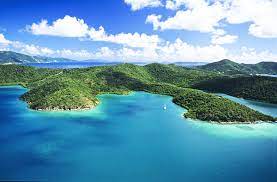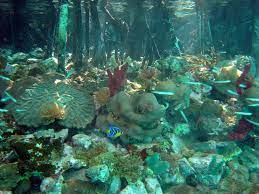Hurricane Hole, St. John, USVI: Nature’s Storm Sanctuary
Nestled in the heart of the U.S. Virgin Islands, St. John stands as a jewel in the Caribbean Sea, known for its pristine beaches, lush greenery, and vibrant marine life. One of the most remarkable features of this enchanting island is Hurricane Hole, a natural wonder that offers respite and protection during the stormy season. Spanning over 2,600 acres and surrounded by the Virgin Islands National Park, Hurricane Hole is a hidden gem, drawing adventurers, ecologists, and nature enthusiasts alike.
History and Formation:
The history of Hurricane Hole dates back millions of years when volcanic activity shaped the landscape of the Virgin Islands. Over time, the molten lava cooled and solidified, giving rise to an intricate maze of underwater caves, reefs, and mangroves. The volcanic origins of the area contribute to its unique geological features, making it a prime location for diverse marine life.
Hurricane Hole derives its name from the protection it provides during hurricanes and tropical storms. The sheltered waters and dense mangrove forests have proven to be a sanctuary for vessels seeking refuge from the wrath of nature. Since the first recorded European exploration of the region in the 17th century, Hurricane Hole has served as a safe haven for ships, offering a natural harbor during times of peril.
Ecological Marvel:
Hurricane Hole is more than just a sanctuary for boats; it is also a haven for a rich and diverse ecosystem. The mangrove forests surrounding the waterways play a crucial role in the preservation of coastal habitats. These complex root systems provide shelter, breeding grounds, and feeding areas for numerous marine species, including fish, crustaceans, and birds.
The underwater caves and coral reefs in the area are teeming with marine life, making it a popular destination for snorkelers and scuba divers. Exploring the crystal-clear waters unveils a world of colorful fish, vibrant coral formations, and other mesmerizing marine creatures, creating an unforgettable experience for visitors.

Aerial view of beautiful Hurricane Hole
Virgin Islands National Park:
Hurricane Hole is an integral part of the Virgin Islands National Park, a protected area that encompasses nearly 70% of the island of St. John. Established in 1956, the park’s mission is to preserve the natural and cultural heritage of the Virgin Islands, making it a crucial site for conservation efforts.
The National Park Service (NPS) manages the park, working diligently to protect the fragile ecosystems, conduct research, and promote environmental education. Through various programs and initiatives, the NPS strives to raise awareness about the importance of preserving the region’s natural beauty and the delicate balance of its flora and fauna.
Recreational Opportunities:
For outdoor enthusiasts, Hurricane Hole provides a wealth of recreational opportunities. Kayaking and paddleboarding are popular activities among visitors, as the calm waters and lush surroundings make for a tranquil and immersive experience. Adventurers can explore the winding waterways, gliding through the mangrove tunnels, and spotting various wildlife along the way.
Hiking trails surrounding Hurricane Hole offer a chance to delve into the island’s lush vegetation and experience breathtaking vistas of the Caribbean Sea. The Reef Bay Trail, for example, leads hikers through a tropical forest, passing historic ruins and freshwater pools before reaching the shoreline.
Conservation Efforts and Challenges:
While Hurricane Hole boasts remarkable beauty and ecological significance, it is not without its challenges. The delicate balance of its ecosystems is susceptible to disruption from human activities, climate change, and pollution. Invasive species, such as the green iguana and lionfish, pose a threat to native flora and fauna, and the warming ocean temperatures can lead to coral bleaching, impacting the reefs’ health.
Efforts to protect and preserve Hurricane Hole are ongoing, with local authorities, non-profit organizations, and community members collaborating to address these challenges. Initiatives include beach cleanups, educational programs, and research projects to better understand the ecosystem and its vulnerabilities.
Sustainable tourism practices play a vital role in ensuring the long-term conservation of Hurricane Hole. Visitors are encouraged to follow Leave No Trace principles, respecting the natural environment and minimizing their impact on the delicate ecosystems.

Colorful fish and coral in the mangroves
Conclusion:
Hurricane Hole, St. John, USVI, stands as a testament to the raw beauty and resilience of nature. From its volcanic origins to its status as a hurricane haven, this natural wonder has captivated the hearts of all who visit it. Its crucial role in protecting marine life, providing a sanctuary for boats, and offering recreational opportunities makes it a must-see destination for ecotourists and adventure seekers alike.
As we continue to navigate the challenges of the 21st century, preserving such ecological treasures becomes ever more critical. By working together and embracing sustainable practices, we can ensure that Hurricane Hole remains a haven of biodiversity and beauty for generations to come.
